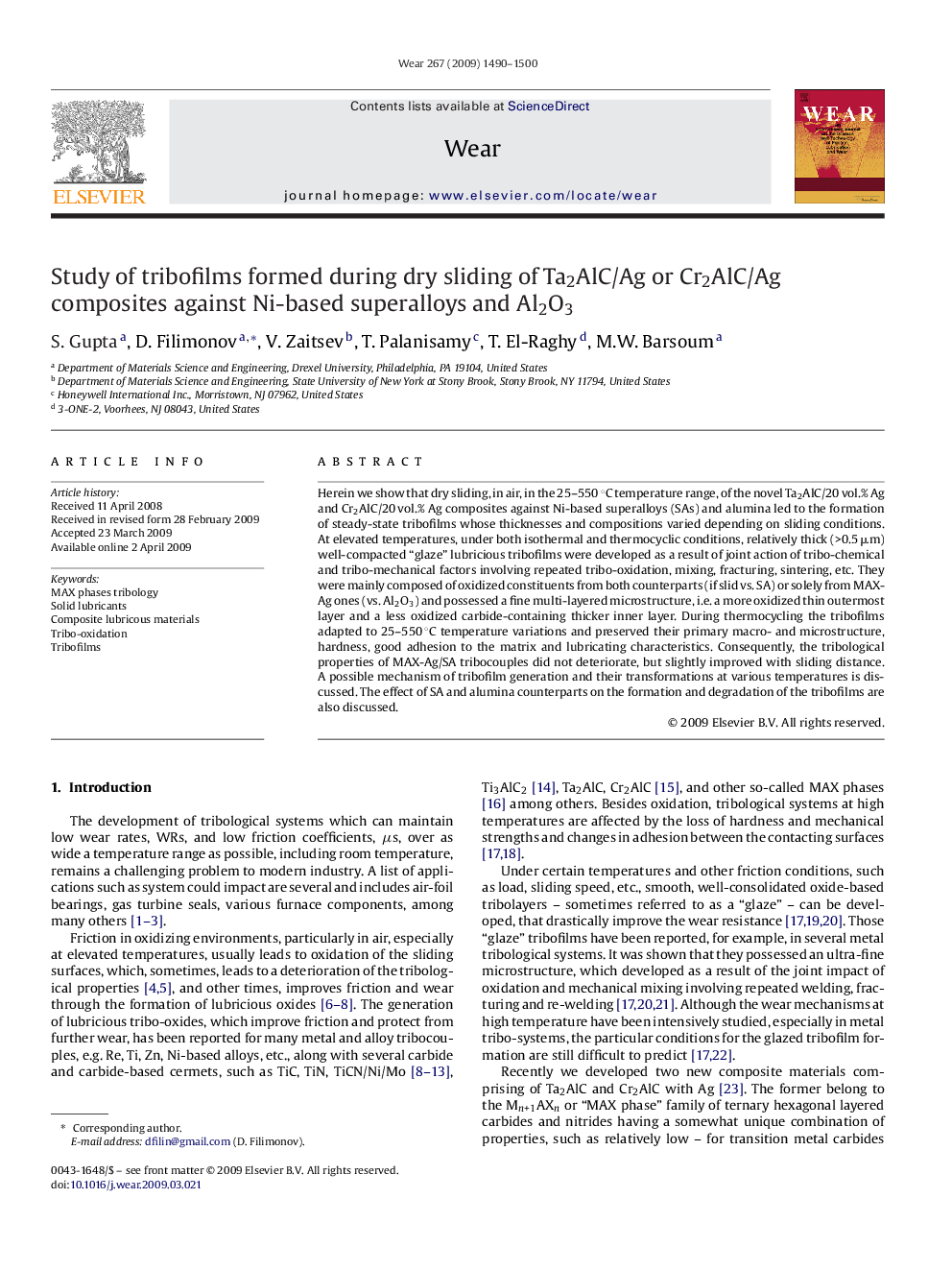| Article ID | Journal | Published Year | Pages | File Type |
|---|---|---|---|---|
| 618536 | Wear | 2009 | 11 Pages |
Abstract
Herein we show that dry sliding, in air, in the 25-550 °C temperature range, of the novel Ta2AlC/20 vol.% Ag and Cr2AlC/20 vol.% Ag composites against Ni-based superalloys (SAs) and alumina led to the formation of steady-state tribofilms whose thicknesses and compositions varied depending on sliding conditions. At elevated temperatures, under both isothermal and thermocyclic conditions, relatively thick (>0.5 μm) well-compacted “glaze” lubricious tribofilms were developed as a result of joint action of tribo-chemical and tribo-mechanical factors involving repeated tribo-oxidation, mixing, fracturing, sintering, etc. They were mainly composed of oxidized constituents from both counterparts (if slid vs. SA) or solely from MAX-Ag ones (vs. Al2O3) and possessed a fine multi-layered microstructure, i.e. a more oxidized thin outermost layer and a less oxidized carbide-containing thicker inner layer. During thermocycling the tribofilms adapted to 25-550 °C temperature variations and preserved their primary macro- and microstructure, hardness, good adhesion to the matrix and lubricating characteristics. Consequently, the tribological properties of MAX-Ag/SA tribocouples did not deteriorate, but slightly improved with sliding distance. A possible mechanism of tribofilm generation and their transformations at various temperatures is discussed. The effect of SA and alumina counterparts on the formation and degradation of the tribofilms are also discussed.
Related Topics
Physical Sciences and Engineering
Chemical Engineering
Colloid and Surface Chemistry
Authors
S. Gupta, D. Filimonov, V. Zaitsev, T. Palanisamy, T. El-Raghy, M.W. Barsoum,
